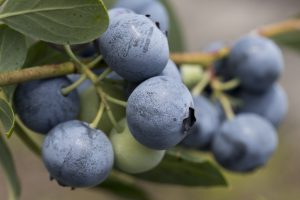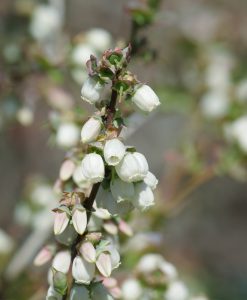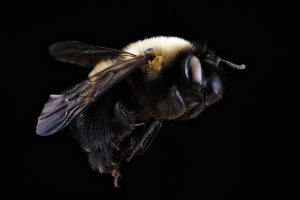
It’s a bit early still for blueberries in north Florida, but they are definitely on the horizon. We have a handful of bushes at home and the office, and I’ve noticed the white blooms are gone and berries are forming as we speak. Many of us, myself included, look forward to the late-spring harvest of blueberries, taking our children out to u-pick operations and hunting down family recipes for blueberry-filled desserts.

Often, when people think of fruit growing in the wild, their minds naturally go to tropical rainforests, with visions of bananas, mangoes, and drooping fruit-laden trees. But blueberries are a home-grown local Panhandle fruit. A walk through any self-respecting northwest Florida wooded area is bound to have blueberry bushes growing wild. Vaccinium species thrive in more acidic soil, (between 4-6 on pH scale), which we have in abundance here. In northwest Florida, we have lots of pines and oaks dropping needles and leaves, seasoning our soil to a 6 or lower on the pH scale. Central and south Florida soils are alkaline due to all of the natural limestone, so while blueberries are grown on farms down south, they’re rarer in the wild.
Blueberries are pollinated by bees of many stripes, but most people are unaware of the specialized bee that literally lives for this season. During the last few weeks, this species has been furiously pollinating blueberry bushes during its short, single-purpose lifetime.

Southeastern blueberry bees (Habropoda labriosa) are active only in mid-March to April when blueberry plants are in flower. They are smaller than bumblebees, and yellow patches on their heads can differentiate males. Blueberry pollen is heavy and sticky, so it is not blown by the wind, and the flower anatomy is such that pollen from the male anther will not just fall onto the female stigma. Blueberry bees must instead attach themselves to the flower and rapidly vibrate their flight muscles, shaking the pollen out. Moving to the next flower, the bee’s vibrations will drop pollen from the first flower onto the next one. This phenomenon is called “sonicating” or ‘buzz pollination” and is the most effective method of creating a prolific blueberry crop.

This native bee lives most of its life underground, emerging in the spring when blueberries are in bloom and living long enough to pollinate the plants. Blueberry bees do not form hives, but create solitary nests in open, sunny, high ground. Females will dig a tunnel with a brood chamber large enough for one larva, filling it with nectar and pollen. After laying an egg, the female seals the chamber and the next generation is ready. The species produces only one generation of adults per year.
By the time we are picking fresh blueberries in May and June, you probably won’t see any blueberry bees around. However, we should all consider these insects’ short-lived but vitally important role in Florida’s $70 million/year blueberry industry!
For more information, check out the beautifully illustrated USDA Forest Service publication, “Bee Basics—An Introduction to our Native Bees,” or North Carolina State University’s entomology website.
Source: UF/IFAS Pest Alert
Note: All images and contents are the property of UF/IFAS.



